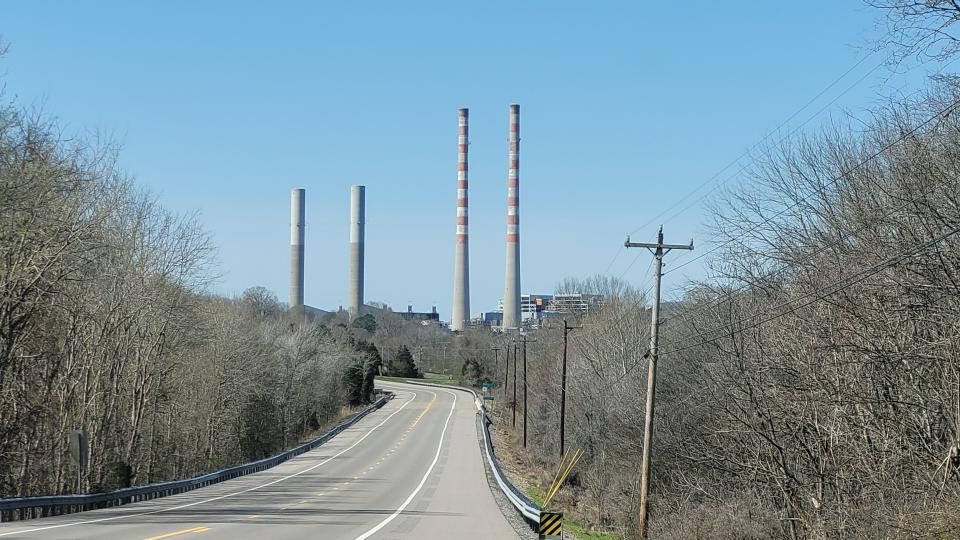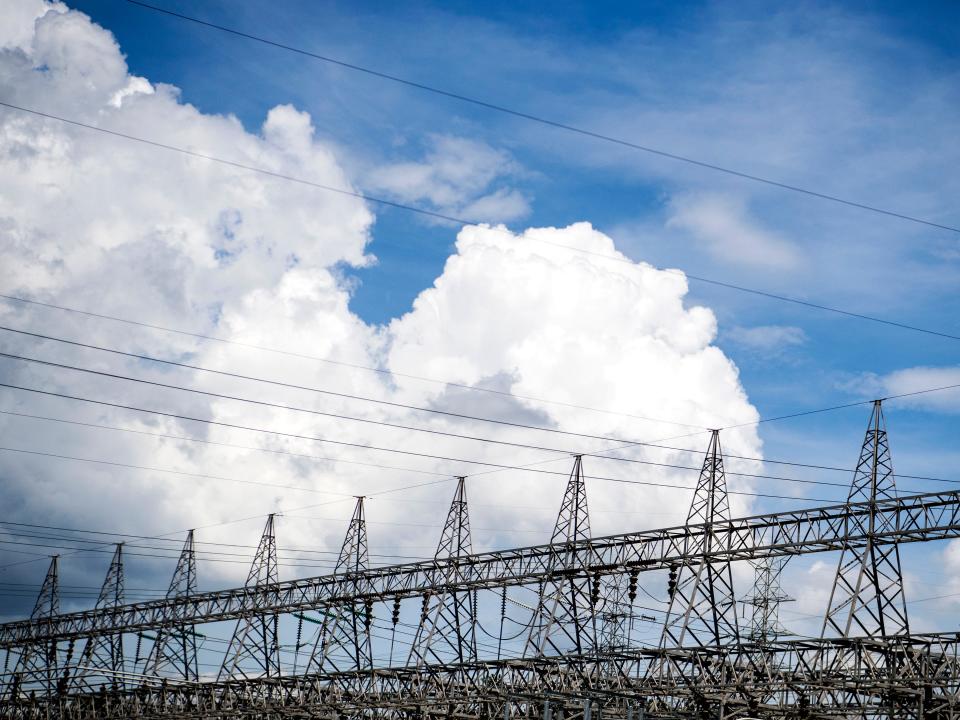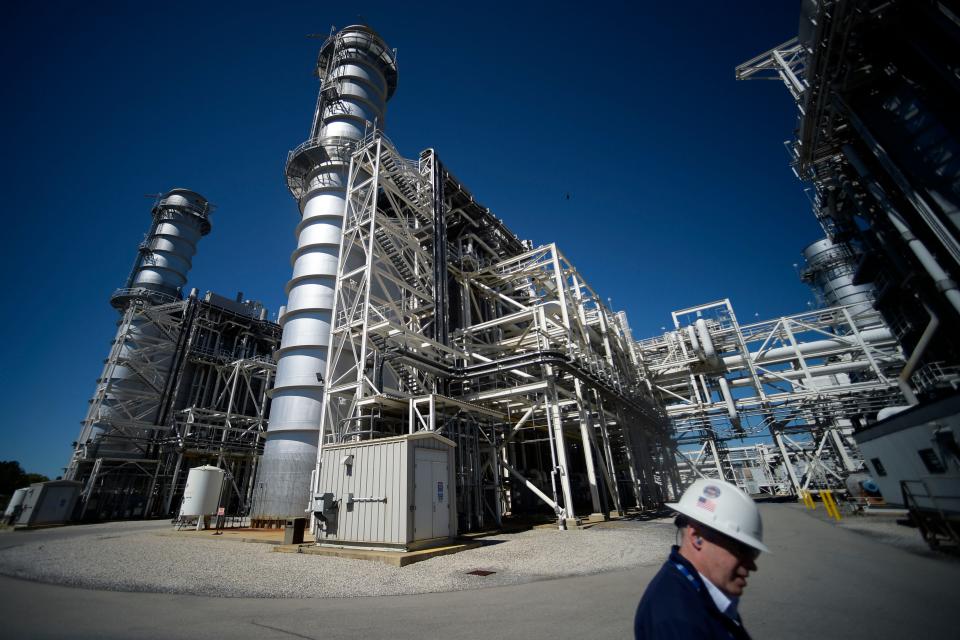TVA report: Winter storm that led to blackouts cost the utility and its customers $170M
The December storm that led to the Tennessee Valley Authority's first rolling blackouts in its history cost the federal utility about $170 million, according to a TVA-produced report.
The report released May 5 by TVA not only describes the breakdowns that led to the rolling blackouts in the bitter cold days before Christmas, but lists weaknesses in TVA's system that must be addressed as climate change increases the chances of severe weather and the demand for electricity continues to rise.
The rolling blackouts across TVA's seven-state region on Dec. 23 and 24 led to an outcry from customers and state and federal lawmakers who challenged TVA's longstanding claims of reliability in serving 153 local power companies, over 750,000 businesses and about 10 million people.
"When you think about an outcome never, ever do we want to have to curtail load for our customers but to keep this system stable, so that it was a short duration outage versus what could have been a very long duration outage, those steps being effective was just critical to success," Don Moul, TVA's chief operating officer, told Knox News in an interview this week about the report.
Since the rolling blackouts occurred, TVA has released pieces of information explaining what happened, including at the utility's February board meeting and in interviews with Knox News. TVA officials have met with lawmakers, customers and local power companies to explain what led to the rolling blackouts and learn what impact it had.
For Subscribers: Knox News's Timeline of Events that Led to TVA's First Rolling Blackouts
TVA created a team internally that collected and reviewed actions taken during the storm and also put together a panel including former Sen. Bob Corker, former American Public Power Association President Joy Ditto and retired Electric Power Research Institute CEO Mike Howard to consult on its actions after the storm.
Here's what we know so far and what the new report from TVA tells us:
What caused TVA's rolling blackouts?
TVA underestimated the demand for electricity in its winter storm forecasts.
TVA did not accurately model how the severe storm would impact its power plants.
In the early hours of Dec. 23, the coal-fired Cumberland Fossil Plant units shut down as critical instrumentation froze due to the weather. Cumberland is one of TVA's largest single generators of electricity and losing the plant's output just as the freeze settled in drastically hurt the utility's ability to meet electricity demand to heat homes and businesses. TVA had similar problems at multiple natural gas plants, especially ones it had purchased that were built for the merchant market, CEO Jeff Lyash told Knox News in February.
38 of 232 coal and gas power generators struggled to stay on primarily due to instrumentation freezing as it was exposed to the cold and rain, and freezing at the plants, according to the report.
TVA workers were able to bring 14 of the 38 units back online in 48 hours using heaters, temporary structures and insulation around the frozen equipment, the report said.

On Dec. 24, when TVA was importing electricity from other regional electric markets to sustain the Tennessee Valley through the rest of the storm, some of the neighboring markets had to recall the power they were sending to TVA because they needed to supply more power to their own market. For example, PJM had to reduce some of its electricity demand and as it pulled back about 3,000 megawatts of electricity, TVA was again unable to meet its regional demand, leading to a second day with rolling blackouts, Lyash told Knox News in February.
“Due to the regional nature of the weather event, energy market purchases were curtailed, contributing to the generation deficiency," TVA said in its report.
How much did the rolling blackouts cost TVA and residents?
The winter storm cost TVA about $170 million, which includes:
increased fuel costs
increased costs from buying electricity
repairs and updating plants
loss of revenue due to reduced power usage from local power companies and TVA's customers during the storm
TVA estimated that average use residential customers would have seen an extra $5.20 on their bills in February.
TVA needs to fix how it predicts weather and electricity demand
In the report, TVA said its forecasting tools "did not accurately predict" the demand for electricity or risks from the storm, noting its system had not seen "back-to-back" mornings with system single-digit temperatures since 1996.
Bob Dalrymple, TVA's senior vice president of resource management and operations services, told Knox News the forecasting tools did not have enough past information and the utility had to rely on its meteorologists but was still unable to get it right.
Moul said TVA is in the early stages of using artificial intelligence to predict weather patterns but the models right now look at what the region has seen in the past. Since the storm was on a holiday weekend, meaning some industrial customers might not need their normal amount of electricity, but most heating in the Valley is also electric, there were multiple factors to account for and the models "did not have a lot of information to base it on."
TVA was not the only utility to have problems with predicting weather and electricity demand, Moul noted.
"So we're looking at, from an action standpoint, what can we do to put some analytics on the front end of our load forecasting tools. So when we're walking into an event we haven't seen in some period of time, how can we help train the load forecasting tools and use the experience of our meteorologists to get the load forecast more accurate,” Dalrymple told Knox News.
More: Jeff Lyash talks after TVA quarterly meeting on fixes made since December after rolling blackouts
TVA is updating its plants to handle extreme weather
TVA's seven state region has peaks in electricity demands in both the winter and summer, and power plants need to be able to function in both temperature extremes.
TVA checks between peak seasons to ensure its plants are ready.
"That winter readiness program had been successful through Winter Storm Uri, polar vortexes in the past in 2014 and 2018, and we did not have problems like this," Moul said.
Lyash said in February that some of the gas plants TVA had bought did not "survive the cold weather" and were not up to the same design standards as the ones TVA built.
TVA will update the current plants and any new plants will be made to meet the same standards.

Relying on neighbors: TVA plans to better study the energy market
As TVA was fixing its plants Dec. 23, it relied on electricity from neighboring grids. On Dec. 24, however, those utilities had their own problems and couldn't share with TVA, which led to more rolling blackouts.
“When another region chooses to pull back the load that they've committed to, they do it because they're in emergency conditions as well," Moul said. "So you'll never hear me complain about that because we all understand that we have these emergency procedures. And those steps are laid out specifically to maintain the stability of the overall grid. And if they don't do it properly, they could jeopardize the entire eastern interconnect, so that's why it's so important people follow the procedures.”
With more reliance on natural gas, TVA says it will plan ahead in the face of problems

TVA did not have any gas supply or pressure issues at its plants but the report said the gas team should "enhance coordination and visibility related to gas supply, pressure alignment and troubleshooting."
This becomes important as TVA plans to build a natural gas plant to replace one of two units at its Cumberland coal-fired plant and is interested in building another gas plant to eventually replace its Kingston coal-fired plant.
"So this is trying to learn from others, even though it wasn't part of our experience during this event," Moul said. "We're trying to think beyond just this event, and build towards our system of the future and thinking about how as coal sunsets and gas becomes a larger percentage of our portfolio, what those risks could be in the future for us and how we can mitigate those risks now.”
TVA needs to communicate better ... with everyone
On multiple levels, the report said TVA must improve communication.
“The flow of information, both internally across the organization and externally with customers, stakeholders, and the public, was not timely or fully effective, which resulted in inconsistent messaging and lack of situational awareness and expectations, and slow internal coordination, approvals and stakeholder responses," the report said.
What are TVA's plans for meeting growing demand?
Looking forward, TVA will need to account for climate change impacts to the electric grid while also decarbonizing and meeting a growing demand for electricity in the region.
Since the winter storm TVA is looking to add more demand response opportunities, which allows the utility to interrupt power from contracted customers when needed, something it relied on during the storm. TVA currently has 1,600 megawatts for its demand response programs.
"TVA has a number of our customers that are on interruptible products and those performed extremely well throughout this event. And so looking for opportunities to expand that so we have more tools in the toolkit related to demand response, but also working with our local power companies. Is there a way to enhance our technology that they have on the distribution system to help us control load more effectively?” Dalrymple said.
TVA has also added 1,000 megawatts of new supply contracts since the storm.
The TVA report said the region is growing six times the national average and saw about a 3% increase in electricity demand from 2019 to 2022. The report listed TVA's plans for more electricity generation, which should amount to about 3,800 megawatts.
This article originally appeared on Knoxville News Sentinel: TVA report on rolling blackouts: Winter storm cost about $170 million

